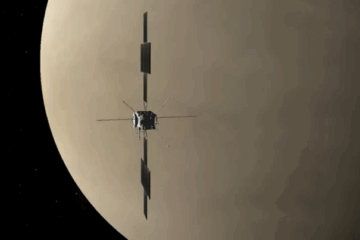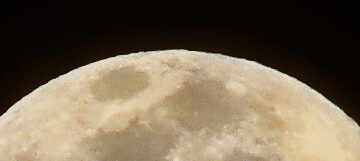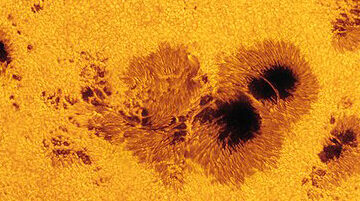”Mountain” to the stars
The Webb Space Telescope peers at hotbed of massive star birth
What do a kind of “crustacean,” an “arachnid” (both arthropods), and the James Webb Space Telescope (JWST) have in connection with one another? When it concerns a relatively nearby location where young massive stars are forming within the Lobster Nebula of gas and dust (a.k.a. NGC 6357) within the well-known late-summer/early-autumn constellation of Scorpius, the Scorpion.
As some of you may already know, astronomers can get quite creative when it comes to naming celestial objects, especially amateurs. Their less-powerful telescopes (as compared to those the professionals use) reveal sights which can lead to seeing a nebula resembling a lobster.
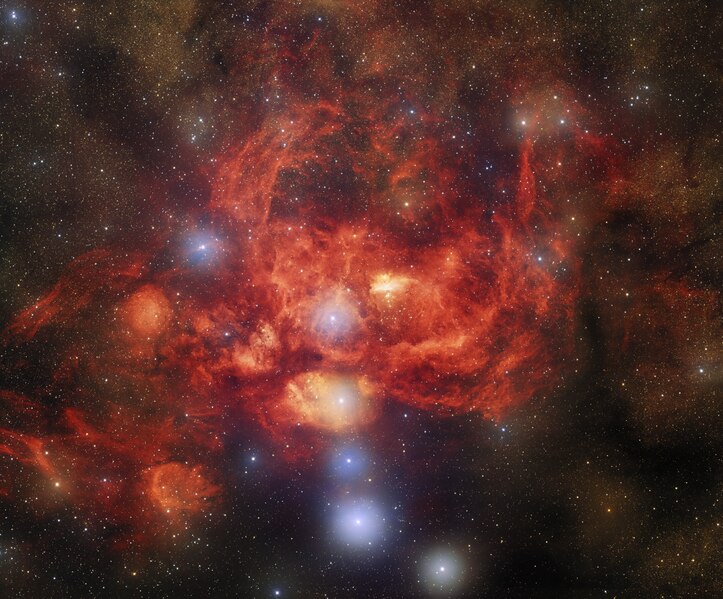
Here’s a view of the Lobster Nebula, which is the home of this article’s JWST target. It was taken by the Víctor M. Blanco 4-meter Telescope located at Chili’s Cerro Tololo Inter-American Observatory using this giant-mirrored instruments Dark Energy Camera. It certainly does look like a parboiled lobster with its bright red color, and you can imagine two claws at its top, the central body, and the segmented tail extending down at an angle to the lower left.
While it may not seem to be very close on human terms, NGC 6357’s distance of about 5 500 lightyears makes it “relatively” nearby. To put it another way, if you were to go out and observe it tonight, the light reaching your eye would have left on its way in about 3 475 BCE, or during our Late Neolithic to Early Bronze Age period of historical human development.
For our ancestors, this was a period of substantial advancements made in agriculture, settlement, and technology throughout various parts of the world. We were then living in permanent villages and towns, cultivating crops, raising livestock, and developing early social structures which would later lead to the world we have today.
The object of Webb’s focus with this research is a star-forming area deep inside this nebula, Pismis 24. To go from a view of the center of our naked-eye Milky Way under ideal conditions and zoom deep inside the Lobster Nebula to find it, take a look with your students at this video (and be sure to have the sound turned up for the traveling music).
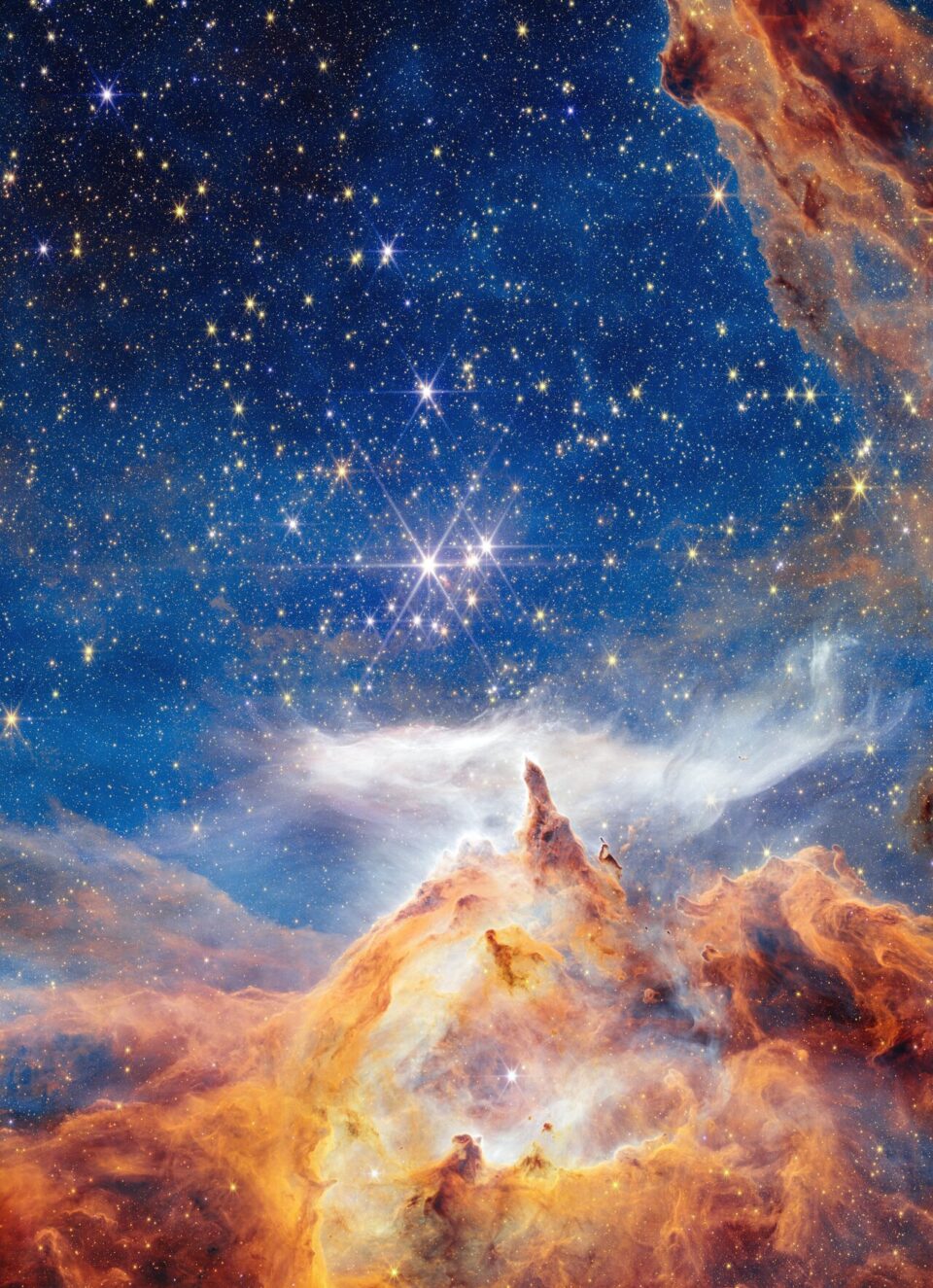
Upon arriving at our destination 5 500 lightyears away, one can see what appears to be a fanciful landscape dominated by a cloud-capped “mountain,” which is in fact the gas and dust stars are forming from. Why does it have this particular shape? Because of the bright young stars seen directly above it.
If you look carefully, they appear to show white, yellow, and orange colors. Such newly formed heavy stars have strong winds coming off of them as they begin to settle down after their nuclear fuel ignites. These powerful breezes are what have sculpted the nebula at the bottom of the image as well as the arc of brown at the top right.
As has been pointed out in other pictures taken by space telescopes, like Webb and Hubble, those long spikes sticking out from the brightest stars are actually artifacts caused by their optical systems, so are not real.
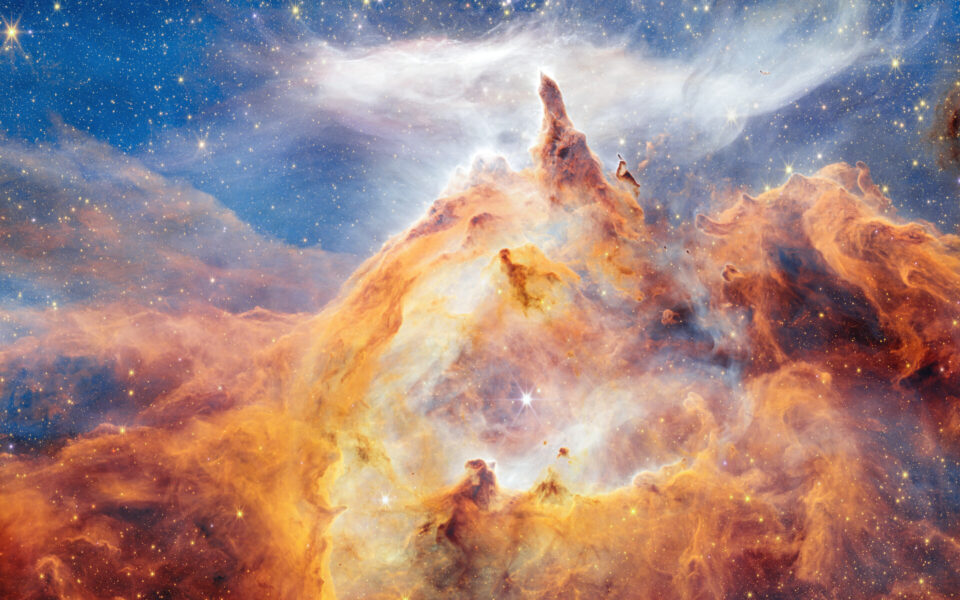
In this closer view of the “landscape” at the bottom of the “mountain,” we can also see many other newborn stars—the light-colored spots—mixed in among the swirls of brownish gas. There are also what look like dark spots, like the one in the bottom-center silhouetted against the whitish “fog.” This is a star in formation which is still within the individual cloud of gas and dust where its growing, soon to ignite into a star. When this happens, it will blow the surrounding cocoon away, revealing itself within.
In case you curious about its origins, the name Pismis 24 comes from the catalogue of open star clusters and globular star clusters of the southern hemisphere compiled by astronomer Marie Paris Pişmiş de Recillas (1911 – 1999). Better known as Paris Pişmiş, she was born in Turkey, and was the first woman to get a PhD from the Science Faculty of Istanbul University. Marrying and settling in Mexico, there she became well-known for her influence in establishing that country’s importance in astronomical education and research. Both her daughter, son-in-law, and granddaughter are astronomers too.
To see the press release about these JWST observations of this source of new stars, follow this link.
By: Tom Callen

